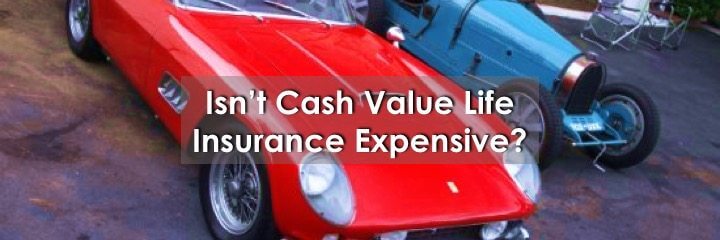Podcast: Play in new window | Download
Over the past few weeks, we've had a half-dozen or so conversations with folks who would like to understand the expense of owning cash value life insurance. Yes, for the sake of our discussion we are lumping together whole life and universal life insurance.
How can we do that? Aren't they distinctly different products? Well, yes and no.
Structurally they are different, however, if someone is evaluating a policy based on its ability to produce a positive internal rate of return on cash, it's possible to boil down the expense of owning the policy.
We are keenly aware of the need that people have to compare the expenses of all their savings and/or investments. And let's be clear, there is a cost to own anything…
Stocks, mutual funds, ETFs, real estate, exotic cars, precious metals, savings accounts etc.
The problem arises for most of us in that we may be comparing expenses incorrectly. With some financial products, it's easy to look at the “expense ratio” and calculate the relative cost of ownership.
However, with others (life insurance included) the comparison cannot be simplified to an expense ratio. Well, you can do it, but you'd be missing the potential.
For example, how do you evaluate the first year expenses of owning a whole life insurance policy compared to the future value of its tax-free (potentially) income stream? The ability of life insurance to do that one thing makes it pretty unique among the alternatives mentioned earlier.
If your goal is to maximize cash flow in retirement (as it is with many folks we work with), then focusing on the “expense ratio” doesn't mean a whole lot. It won't really tell you much of anything as it relates to the future ability to generate cash years down the road.
See, comparing expense ratios is relevant when comparing like products–one S&P 500 index fund versus another. However, with life insurance, expenses can be embedded within the structure of the policy.
What do I mean by that?
Consider this…
You have decided that you'd like to dedicate $50,000/year in premium to a whole life policy. Your goal is to maximize cash value growth to increase liquidity as quickly as possible and to provide a future cash flow in retirement. And you're comparing company A versus company B–both offer participating whole life insurance policies.
Well, logic tells most of us that they must be the same because par whole life is mechanically identical. And if we're looking at textbook definitions, you'd be right. However, company A allows a much higher ratio of paid-up additions for your 50k than does company B.
As it relates to your goal of increasing future value and cash flow, company A is “cheaper” and will very likely produce a better outcome.
I am oversimplifying for sake of the example but there are multiple components that have to be evaluated within a whole life policy to determine expense. Our point…it's much more useful for you to focus on the result than the expense ratio.

